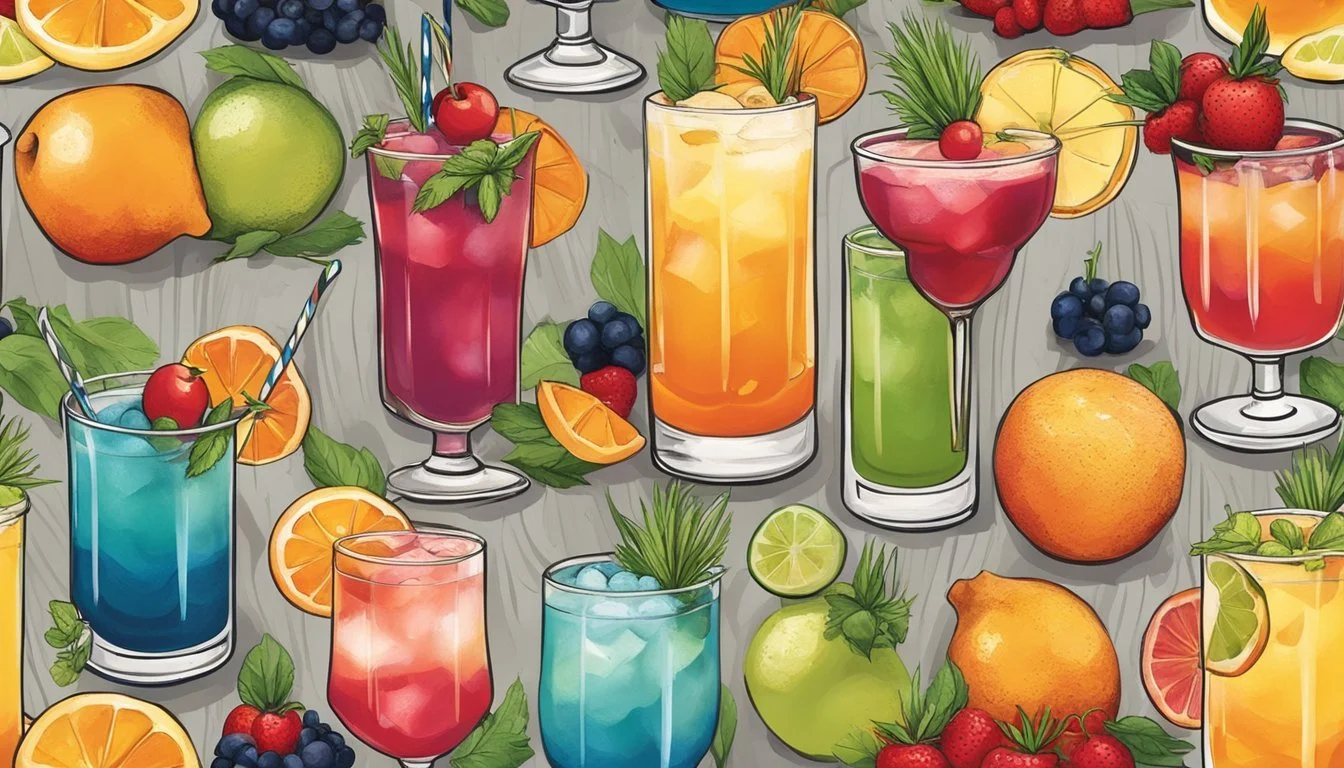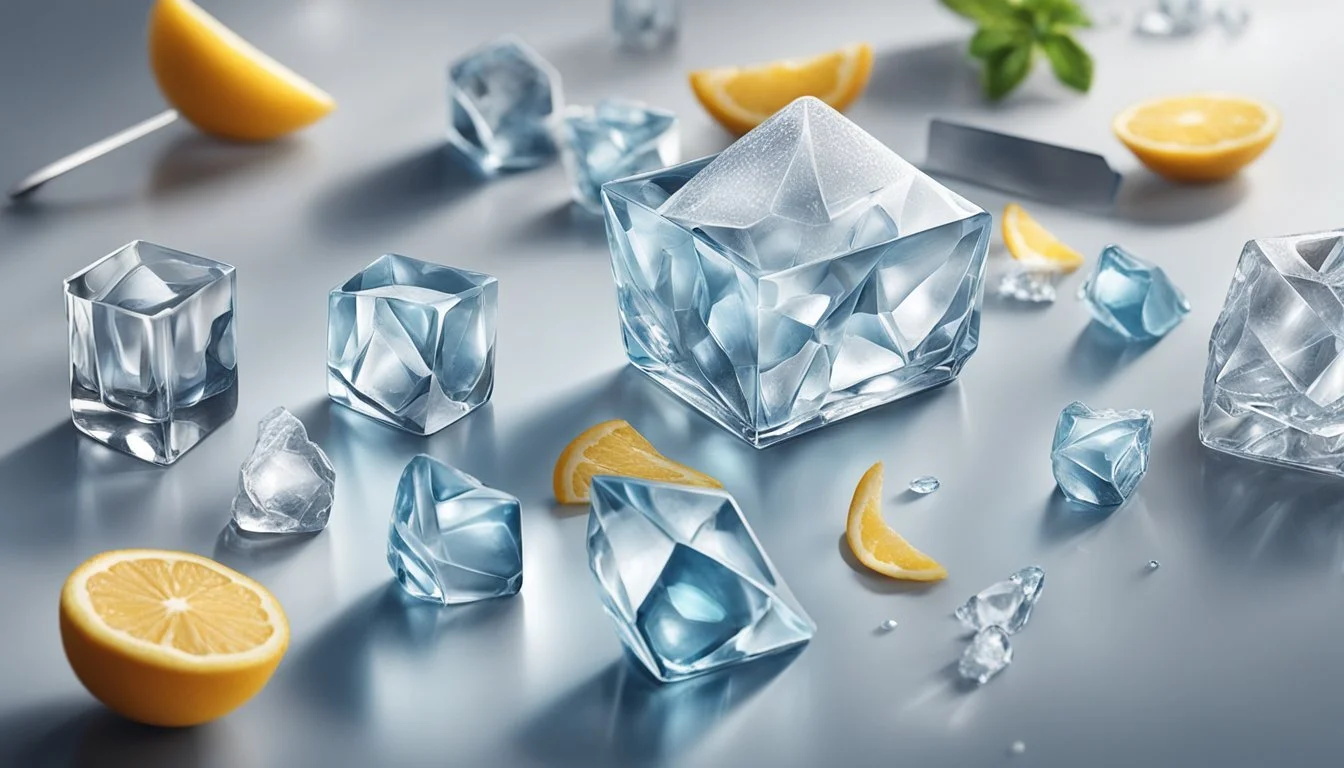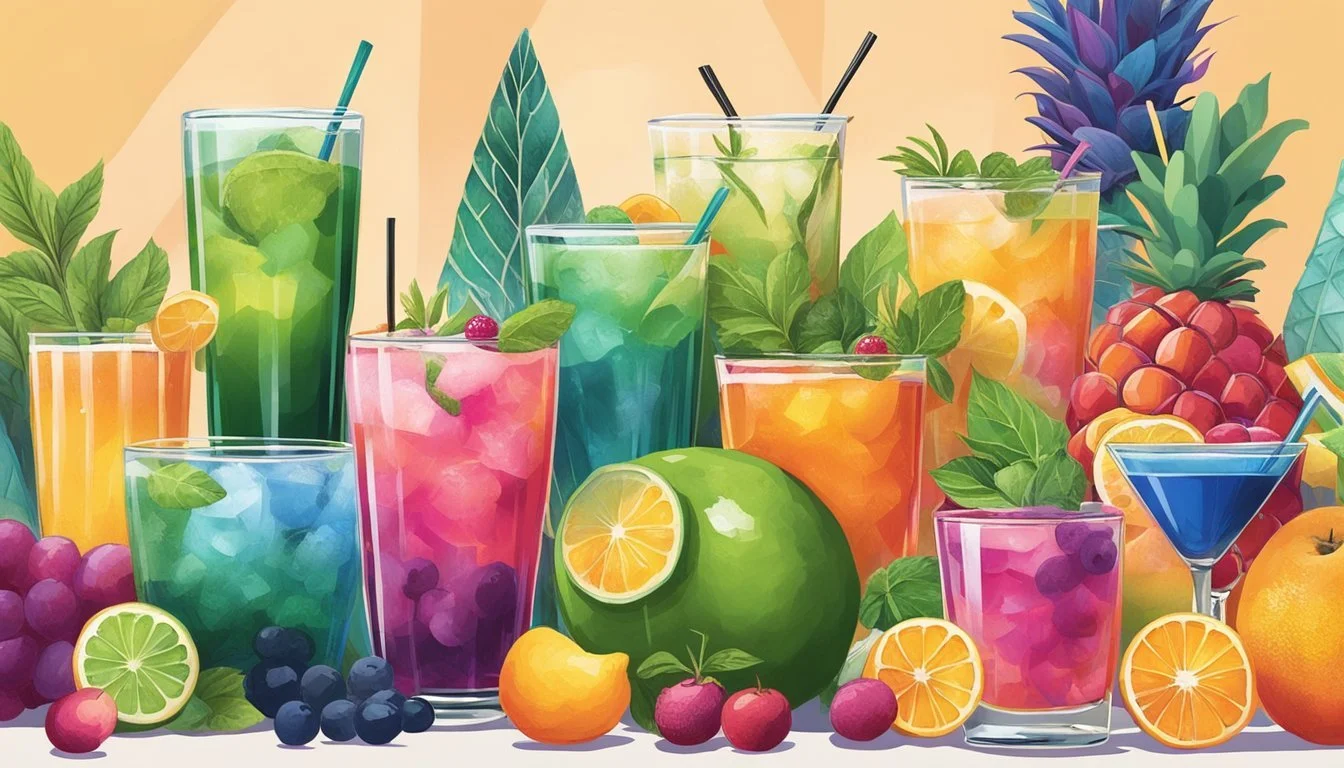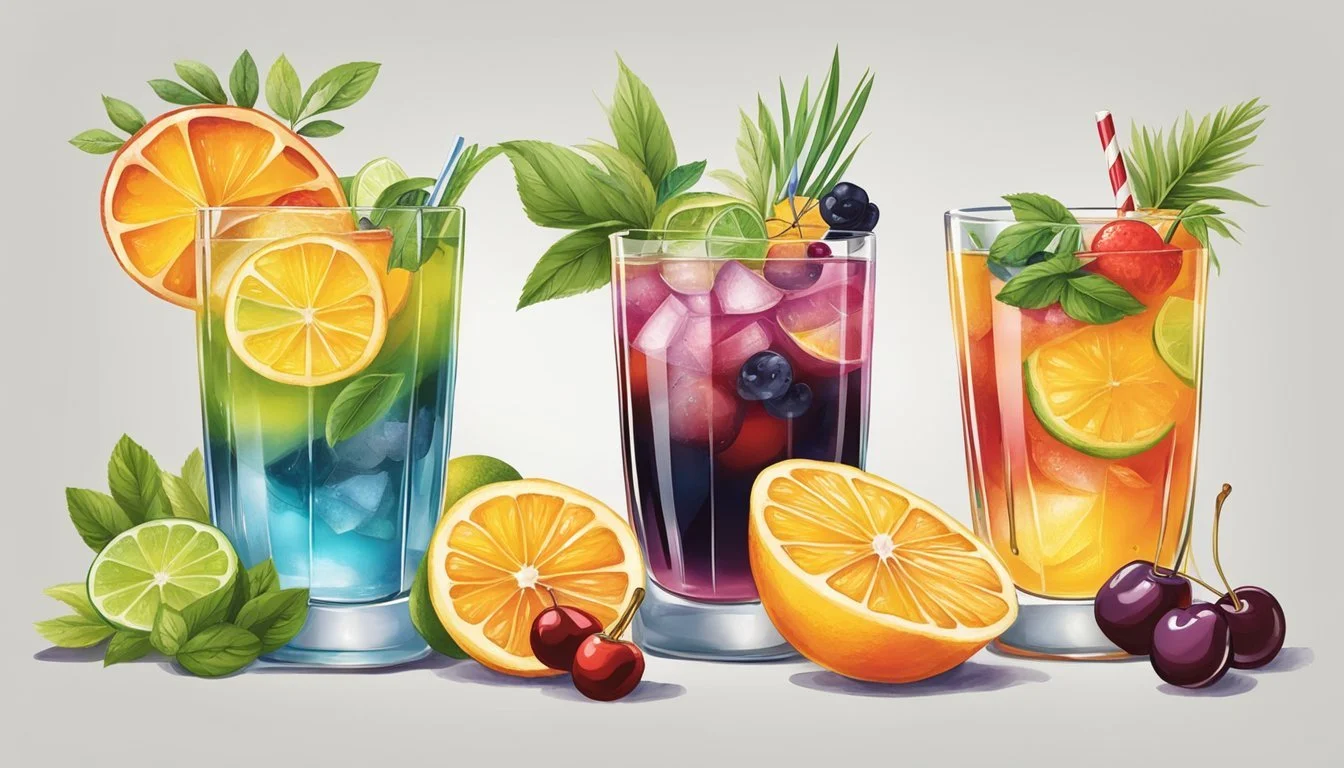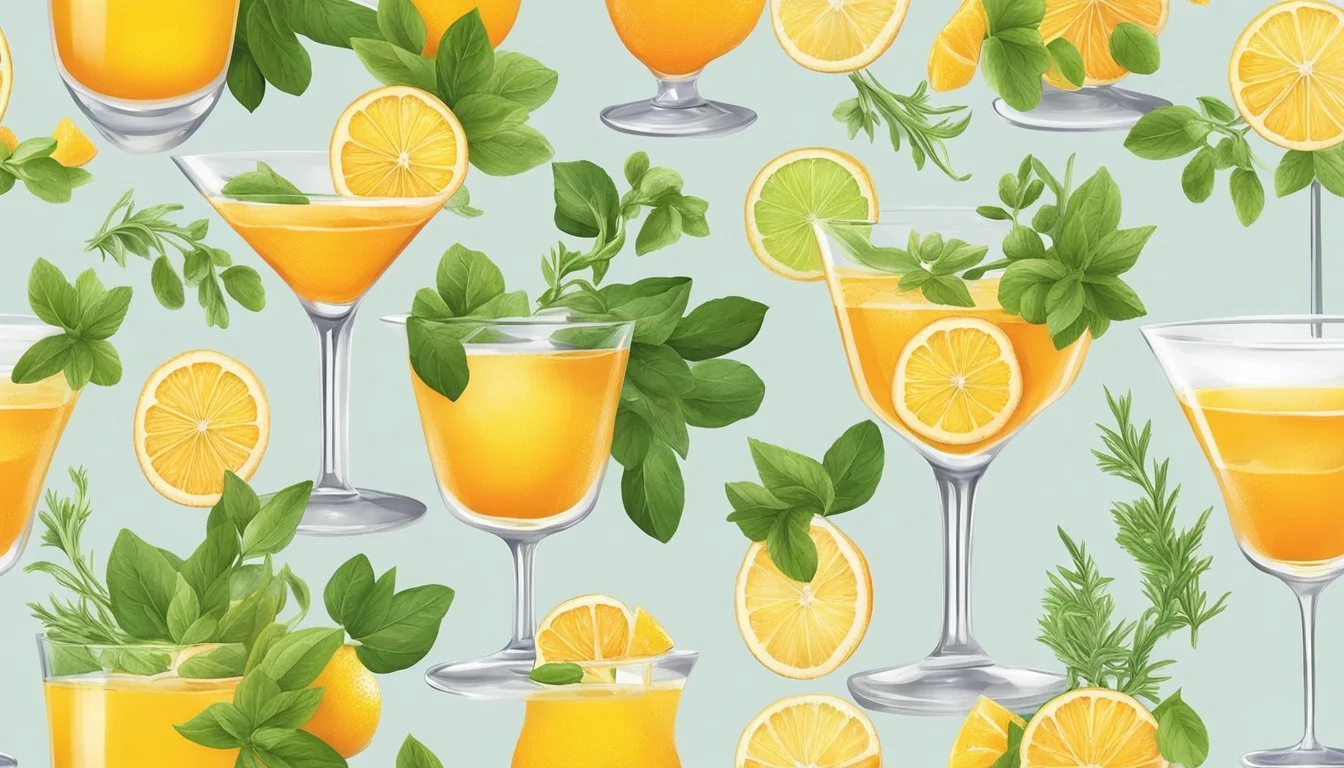The Art of Garnishing Texas Cocktails
Elevating Spirits with Style
The art of garnishing Texas cocktails is a celebration of both visual appeal and sensory enhancement. A successful garnish not only complements the flavor profile of the drink but also adds to the overall presentation, turning a simple beverage into an immersive experience. In Texas, where the cocktail culture thrives on bold flavors and innovation, the choice of garnish becomes pivotal to the drink's identity. By selecting the appropriate embellishments, from a sprig of local herbs to a slice of fresh fruit, mixologists evoke the essence of the Lone Star State in every glass.
Presentation is key in the world of cocktail crafting, and a thoughtfully chosen garnish does more than merely adorn the rim of a glass. It serves as the visual invitation to savor the concoction within. The right garnish, carefully placed, can transform the act of sipping a cocktail into a full-bodied encounter, engaging all the senses. In Texas, where aesthetics and palate pair with tradition and creativity, the art of the garnish is given its rightful place at the forefront of cocktail presentation.
With every cocktail served, the garnish speaks to the care and creativity invested in its creation. It is a signature element that distinguishes an ordinary drink from a remarkable one, capturing the spirit of Texas's rich and varied cocktail scene. Whether subtle or show-stopping, each garnish is applied with intention, elevating the humble cocktail to the realm of artistry.
The Role of Garnishing in Cocktail Presentation
Garnishing a cocktail is not just about adding a decorative touch; it is an art form that enhances the visual appeal and overall presentation of a drink. Skilled mixologists understand that the right garnish can transform a simple cocktail into an immersive sensory experience. It requires attention to detail and an eye for balance to create an engaging visual element that complements the drink's flavor profile.
Visual Appeal: Mixologists utilize various garnishes such as fruit peels, herbs, flowers, and even edible gold leaf to create visually appealing drink presentations. These are carefully selected and arranged to provide an aesthetic allure that entices the guests.
Sensory Enhancement:
Aroma: Garnishes like a sprig of rosemary or a cinnamon stick can add an aromatic dimension to cocktails, influencing the drinker's flavor perception.
Texture and Taste: Fresh herbs or citrus twists can introduce an additional layer of flavor and texture that makes the cocktail more enjoyable.
Guest Experience: A well-garnished drink signifies attention to detail and care in preparation, which elevates the guest's experience. The sight of a beautifully garnished cocktail generates anticipation and sets the expectation for the drink itself.
Technique and Placement: The placement and styling of garnishes are crucial. They should accentuate the cocktail's features without overpowering them. Whether it's a simple twist of lemon or an elaborate floral arrangement, the garnish should harmonize with the drink's character.
In summary, garnishing plays a pivotal role in cocktail presentation, utilizing artistry to enhance both the visual and sensory enjoyment of the drink for guests.
Fundamental Garnishing Techniques
The art of garnishing Texas cocktails hinges upon the selection, preparation, and application of garnishes. These steps are critical for enhancing not only the drink's appeal but also its flavor profile.
Choosing the Right Garnish
When it comes to Texas cocktails, one must select garnishes that complement the drink's flavor and presentation. A sprig of thyme or a slice of jalapeño could be used for a spicy margarita, while a curled lemon peel might be more suitable for a classic Texas martini. Essential considerations include:
Seasonality: Fresh, in-season ingredients can provide better flavor and appearance.
Pairing: The garnish should enhance the drink's taste, not overpower it.
Theme: For themed events, the garnish can add a visual element that ties into the overall concept.
Cutting and Preparing Techniques
Properly cutting and preparing garnishes are fundamental skills that require precision and practice.
Citrus Wheels or Wedges: Slice the fruit cleanly to create uniform wheels, or make a small cut in a wedge for easy placement on the rim.
Peels: Use a peeler to produce long, continuous strips, expressing the oils over the drink for added aroma.
Herbs: Gently slap herbs between one's hands to release their natural oils and aromas before adding them to the cocktail.
The key is to handle all ingredients carefully to preserve their aesthetic and aromatic qualities.
Applying Garnishes to Drinks
The final step is the strategic placement of the garnishment onto the cocktail.
Placement: Wedges and slices often sit on the rim or float atop the drink, while peels and twists might be dropped in or perched on the edge.
Use of Tools: Specialized tools like cocktail picks or skewers can hold together complex garnishes for a sophisticated look.
Final Touch: Lastly, aromatics can be warmed gently with a lighter to highlight their fragrance just before serving the drink.
Each technique serves to highlight the cocktail's best features while delivering an impactful sensory experience.
Understanding Flavor Profiles and Their Enhancements
When garnishing cocktails in Texas, appreciating and enhancing the flavor profile is a skillful art. Flavor profiles in cocktails comprise different components such as sweet, sour, bitter, spicy, and salty. The garnish should not only complement the base flavors of the drink but also work to enhance and balance them.
Sweet: A slice of peach or a maraschino cherry adds a touch of sweetness.
Sour: A wedge of lime offers a zesty tang.
Bitter: A few dashes of bitters or a grapefruit twist can impart complexity.
Salty: A salt rim or an olive introduces a savory note.
Spicy: A jalapeño slice kicks up the heat for a bold drink.
Each garnish imparts a distinct element that interacts with the flavor profile of the drink, contributing to the overall experience. It's essential to consider how a garnish might enhance the primary flavors.
For instance, a sprig of rosemary or a cinnamon stick, when slightly warmed, releases aromas that heighten the cocktail's appeal and work synergistically with each sip. Furthermore, a citrus twist, often seen in Texas cocktails, serves a dual purpose: it decorates and also spritzes essential oils into the drink, adding a fresh, aromatic layer that complements many flavor profiles.
In summary, mastering garnishes is about understanding how different elements interact within a cocktail to create a harmonious and elevated drinking experience.
Incorporating Fruits and Citrus into Cocktails
Incorporating fruits and citrus into Texas cocktails offers a blend of visual allure and flavor complexity. The use of fresh elements not only adds zest but also an authentic Texan flair to the beverage.
Citrus Twists and Peels
A citrus twist serves both as a garnish and a flavor enhancer in cocktails. The oils released from citrus peels such as lemon, lime, and orange add a subtle yet distinct note to the drink. To create a twist, bartenders use a paring knife or a channel knife to carefully cut a strip of the peel, avoiding the bitter white pith. The peel is then twisted over the drink to spray its oils before it's dropped in or perched on the rim as garnish.
Steps to create a citrus twist:
Select a fresh citrus fruit like a lemon or lime.
Slice a piece of the peel, minimizing inclusion of the pith.
Twist the peel over the cocktail to release the oils.
Garnish the beverage with the peel.
Berry Accents
Berries bring a juicy burst of flavor and bright pops of color to refreshments. Bartenders often incorporate berries like strawberries, raspberries, and blackberries for a sweet and tart taste. They can be muddled, skewered, or floated atop cocktails to enhance both the drink's appearance and flavor profile.
Berry garnish ideas:
Muddled at the bottom of a glass for a burst of flavor.
Skewered on a cocktail pick for an elegant presentation.
Fresh atop the drink as a visually appealing garnish.
Tropical Fruit Garnishes
In Texas, where the climate enables the growth of various tropical fruits, incorporating these flavors into cocktails is popular. Pineapple wedges, for example, invoke a sense of island leisure and add a rich, sweet essence to the beverage. The vibrant colors and shapes of tropical fruits also provide a visually stunning element to a drink's presentation.
Ways to use tropical fruits in cocktails:
A wedge of pineapple perched on the rim provides both flavor and a decorative touch.
Slices of tropical fruits can be floated in the drink for a festive look.
Herbs and Spices as Aromatic Garnishes
The precise use of herbs and spices has the power to transform Texas cocktails from simple drinks into aromatic masterpieces. They add an olfactory dimension that is crucial to the experience of enjoying a cocktail, making them indispensable in modern mixology.
Mint and Basil
Mint is cherished for its vibrant and cooling effect, a staple in cocktails like the Mojito. Its fresh leaves can be muddled or used as a whole sprig to infuse a clean, crisp aroma. Basil, on the other hand, imparts a subtle anise-like flavor and is often paired with fruitier concoctions. It is particularly appropriate for sweeter Texas drinks where its peppery quality balances the sweetness.
Usage of Mint:
Muddled in the drink
A sprig as garnish
Usage of Basil:
Torn leaves mixed into the cocktail
A full leaf as garnish
Rosemary and Thyme
Rosemary enhances a cocktail's sensory appeal with its woodsy and evergreen scent. It is especially compatible with botanical spirits like gin. Applying a gentle heat to the sprig releases its fragrant oils more powerfully. Thyme offers a more delicate earthiness and is versatile enough to pair with a variety of spirits, adding a subtle layer of complexity to the drink's aroma.
Application of Rosemary:
Lightly heated sprig to unleash aroma
Application of Thyme:
Sprig rested atop the drink or on the rim
Cinnamon and Nutmeg
Cinnamon sticks can act as both a visual and aromatic garnish; gently heating the cinnamon can amplify its warm, spicy scent. Nutmeg, when freshly grated over a cocktail, offers a rich, nutty aroma distinctive of the spice. These spices are frequently associated with winter drinks, but they can bring a Texan twist to classic beverages year-round.
Cinnamon:
Stick gently heated and placed in the drink
Nutmeg:
Freshly grated on top before serving
Using Edible Flowers and Unique Ingredients
When crafting cocktails with Texas flair, bartenders often reach for local edible flowers to create an unforgettable visual and flavor profile. Edible flowers add not only a pop of color but also a nuanced taste that can complement the spirit base of the drink.
Hibiscus is a versatile flower that can be used fresh or dried. It imparts a vibrant crimson hue and a tart, berry-like flavor, making it ideal for summery cocktails or a Texan twist on a hibiscus margarita.
Lavender brings a fragrant, slightly sweet note to beverages. When Texas mixologists incorporate lavender, they use it sparingly to ensure it accentuates rather than overwhelms the drink. The flower pairs well with gin, lending itself to an aromatic Lavender Gin Fizz.
Other Unique Ingredients:
Bee Balm: With minty undertones, bee balm amplifies the freshness of cocktails containing mint.
Flower Flavor Profile Pairing Suggestions
Hibiscus Tart, berry-like Rum, Tequila
Lavender Sweet, floral Gin, Vodka
Bee Balm Minty Mojitos, other mint cocktails
These unique garnishes provide more than just aesthetic appeal; they infuse the drink with distinct Texas character. When using edible flowers, bartenders must ensure they are free of pesticides and safe for consumption. Proper identification and sourcing from reputable suppliers or well-maintained gardens are essential to provide not only beauty and taste but also safety for patrons enjoying Texas's spirited offerings.
Crafting Ice as a Garnish Element
In Texas cocktails, ice serves not just to chill but also to visually fascinate and complement flavors. Mastery over its formation and enhancement plays a pivotal role in the presentation and taste of a drink.
Clear Ice Techniques
Clear ice is prized for its pure, flawless appearance and slower melting rate. Bartenders often utilize directional freezing, a technique where water is frozen from the top down, pushing impurities to the bottom, which can be removed after freezing. This is achieved by insulating the sides and bottom of the ice mold, allowing only the top to be exposed to cold air. The resulting block can be cut into polished cubes or spheres that enhance the aesthetic of a cocktail without clouding it.
Equipment needed:
Insulated cooler
Ice molds
Saw or ice pick
Tongs
Steps:
Fill the insulated cooler with water.
Place in the freezer with the top open.
Once frozen, remove and separate the clear ice from impurities.
Carve into desired shapes with a saw or ice pick.
Flavored and Shaped Ice
Flavored ice involves infusing the water with various ingredients before freezing. These can include herbs, fruits, or even edible flowers, infusing the drink with subtle flavors as they melt. The method is straightforward: mix the flavor elements with water, pour into molds, and freeze.
Shaped ice, on the other hand, elevates the presentation game. Using silicone molds, ice can be fashioned into a variety of shapes, from simple spheres to intricate Texas stars. Specialty molds and even custom designs are available, allowing for a creative expression that is both unique and memorable.
Popular flavors:
Citrus zest
Berries
Cucumber slices
Lavender
Molding options:
Spherical molds
Cubed trays
Custom silicone molds
When crafting flavored and shaped ice, it's crucial to consider how the melt will interact with the drink's other components. The goal is to complement, not overpower, the existing cocktail flavors.
Specialty Garnishes for Signature Cocktails
In the realm of Texas mixology, a cocktail's garnish not only complements the drink but also defines its character, creating a signature appeal that is both visually and sensorially compelling.
Creating a Signature Garnish
The creation of a signature garnish is an art that requires both creativity and an understanding of the cocktail's flavor profile. Bartenders may choose a sprig of rosemary or a cinnamon stick to enhance aromatic properties or might opt for a personalized touch that reflects the spirit of the Lone Star State. One might see vibrant garnishes, like a slice of jalapeño for a spicy kick, or a charred oak branch resting atop a smoked whiskey cocktail to invoke the rustic essence of Texas.
Seasonal and Specialty Ingredients
To establish a sense of place and time, bartenders often employ seasonal and specialty ingredients in their garnishes. Incorporating native Texas plants or seasonal fruits not only supports local agriculture but also provides fresh, vibrant flavors and aromas. A winter cocktail might feature a crisp apple slice or a dash of pomegranate seeds, while summer drinks could showcase lush berries or a bright wedge of Texas grapefruit. Furthermore, the iconic maraschino cherry is given a local twist, soaked in a regional bourbon to enhance its sweetness and add a touch of Texan charm.
Garnishing for Different Types of Cocktails
The visual appeal and aroma of cocktails are significantly enhanced with the right garnishes, creating a more immersive drinking experience. Different types of drinks demand specific garnishes that complement their flavors and presentation styles.
Garnishes for Martinis and Margaritas
Martini aficionados often prefer a clean, elegant garnish. A skewer of olives or a lemon twist is classic for a traditional martini, while margaritas typically call for a bold lime wheel perched on the rim. The garnish for a martini should be as refined as the drink itself, enhancing its crisp and dry profile. For margaritas, the bright acidity of lime adds to the refreshing character of this tequila-based cocktail.
Martini: Olive(s) or lemon twist
Margarita: Lime wheel
Citrus and Salt Rims for Tequila-Based Drinks
The salt rim is synonymous with tequila cocktails, such as the margarita. It balances the beverage by accentuating the sweet and sour flavors. When garnishing, one should moisten the rim of the glass with a lime wedge before dipping into coarse salt to create an even coating.
Rim Preparation:
Moisten with lime
Dip in coarse salt
Creative Accents for Whiskey Cocktails
Whiskey drinks often benefit from garnishes that bring out their deep, complex flavors. An Old Fashioned is typically adorned with an expressed orange peel, releasing essential oils that complement the whiskey. A Whiskey Sour might feature a maraschino cherry and an orange slice, enhancing its sweet and tart dimensions.
Old Fashioned: Orange peel
Whiskey Sour: Cherry and orange slice
Elevating the Home Cocktail Experience
Crafting cocktails at home has transformed from a mere mixing of spirits and mixers to an art that demands creativity and a flair for presentation. A well-garnished drink not only draws the eye but also enhances the overall flavor of the cocktail.
Presentation
The visual aspect of a signature cocktail sets the tone for the taste experience. Carefully selected garnishes can make a cocktail appear inviting and thoughtfully prepared.
Color Contrast: Bright citrus peels or vibrant herbs against the hue of the drink.
Glassware Choice: Selecting the right type of glass to complement the style of the cocktail.
Flavor Enhancement
The inclusion of garnishes adds a layer of complexity to the flavor profile of the cocktail. A simple twist of lemon adds a citrusy zest, while a sprig of mint can introduce a refreshing undertone.
Aroma: Additional elements like a cinnamon stick or a rubbed sage leaf release aromas that enhance the flavor as they mingle with the drink.
Taste: Elements like salt rims or sugar-frosted berries can adjust the sweetness or saltiness, balancing the drink's flavor profile.
At home, individuals have the freedom to experiment with unique combinations that elevate their cocktail experience. By employing these tactics, the home bartender can easily transform their creations into sophisticated and enjoyable beverages.
Professional Tips for Aspiring Mixologists
When mastering the art of mixology, professionals should focus on selecting fresh ingredients, creating a harmonious balance between taste and presentation, and commit to continuous learning and experimentation.
The Importance of Freshness
Fresh ingredients are paramount in mixology. They bring a vibrancy and depth of flavor that cannot be replicated with pre-packaged or processed alternatives. Aspiring mixologists should prioritize sourcing local, in-season produce for garnishes and incorporate it into their cocktails. For instance, a freshly sliced Texas grapefruit can enhance the appeal and the palatability of a highball.
Balancing Taste and Aesthetic
A well-garnished cocktail is a feast for the senses, but it must also be well-balanced in terms of flavor. Mixologists should strive for a synergy between the visual appeal and taste of the cocktail. Texas mixologists might opt for subtle, herbaceous notes with a sprig of local thyme, ensuring it complements rather than overpowers the drink.
Continual Experimentation and Learning
The field of mixology is dynamic, and perpetual learning is crucial for a professional's growth. They should stay informed of new trends and techniques, experimenting to refine their craft. Whether it is infusing local Texas spirits with unexpected flavors or practicing advanced garnishing techniques, there's always something new to master.
Garnishing Etiquette and Serving Guests
When serving guests in Texas, one must observe certain garnishing etiquette to ensure that the presentation of cocktails is as enjoyable as the taste. A well-garnished cocktail can enhance the overall experience and contribute to the ambiance of the occasion.
Visual Appeal: The visual aspect of garnishing should not be underestimated. Guests often appreciate a drink that looks as good as it tastes. A simple citrus twist or a sprig of local herbs can add a touch of elegance to any beverage.
Engaging the Senses:
Sight: A cocktail's appearance sets expectations.
Smell: Aromatic garnishes contribute to the flavor perception.
Touch: Texture of garnishes should complement the drink.
Aroma Enhancements: Texas bartenders know the importance of engaging the olfactory senses. They may lightly heat a cinnamon stick or express an orange peel to release enriching aromas that complement the spirit of the cocktail.
Respecting Preferences:
Always inquire about any guest allergies or garnish preferences.
Offer alternatives when necessary to accommodate individual tastes.
Timely Presentation: Present the cocktail promptly after garnishing, as the aroma and appearance are most potent immediately after preparation.
Garnish Proportionality:
Ensure garnishes are proportionate to the drink size.
Avoid overwhelming the beverage with excessive garnish.
Cultural Considerations: Texas has a diverse culture. It is crucial to be aware of cultural sensitivities and preferences when selecting garnishes to cater to all guests respectfully.
Garnish Hygiene:
Always handle garnishes with clean tools or gloves.
Use fresh, high-quality ingredients to showcase respect for guests and craft.
Maintaining Consistency and Quality in Garnishes
To ensure that each cocktail garnish is a work of art, bartenders must prioritize consistency and quality. A garnish not only embellishes a drink but also contributes to its aroma and flavor profile.
Consistency is crucial for establishing a signature experience. Bars and mixologists should have standard procedures for creating garnishes. This includes the size, shape, and style of each garnish. For example:
Citrus twists: They should be cut uniformly to ensure that each cocktail has the same look and taste.
Herbs: Freshness is key. Visually inspect each sprig or leaf for blemish-free quality.
For quality, selecting the right ingredients is only the beginning. The storage and preparation of garnishes play a major role in maintaining their integrity.
Storage: Keep herbs hydrated and citrus covered to preserve freshness.
Preparation: Use sharp knives and appropriate tools to create precise, clean cuts.
To help visualize this, consider the following table that outlines steps for garnish preparation:
Step Description
1. Selection Choose high-quality, fresh ingredients.
2. Pre-cutting Prepare garnishes before service to save time and ensure uniformity.
3. Tools Utilize the correct tools, such as a zester or channel knife for citrus peels.
4. Storage Store garnishes in optimal conditions; cool and away from direct sunlight.
5. Final Touch Apply garnishes with care to each drink, ensuring consistent presentation.
Lastly, training is essential. Staff should be well-versed in both the creation and application of garnishes to keep cocktails looking and tasting their best.
Conclusion
The garnishing of cocktails in Texas is held in high esteem, recognized as an essential facet of presentation and a compliment to the robust flavors for which the state's drinks are renowned. These careful embellishments transform beverages, making each cocktail a celebration of craftsmanship.
Visual Appeal: Every garnish added to a Texas cocktail serves the art of presentation, offering a feast for the eyes. This visual appeal is not mere decoration; it forms an integral part of the drinking experience. The bold character and creativity of the Lone Star State shine through in the thoughtful placement of a citrus twist or a meticulously skewered olive.
Enhancing Flavors: Garnishes are expert allies in flavor enhancement. They pull forth subtle notes and create harmony within the drink. The zest from a lemon peel, for example, can brighten the profile of a classic whiskey sour, while a sprig of fresh mint might complement the sweet complexity of a mojito.
Creating an Enjoyable Experience: In the hands of a skilled bartender, each garnish contributes to an enjoyable experience for the patrons. The art of garnishing goes beyond aesthetics alone—it is a sensory invitation, encouraging guests to savor the bouquet and taste of their chosen libation.
Aspect Role in Cocktail Garnishing
Presentation Elevates visual appeal
Art Reflects creativity and craft
Flavors Enhances and complements
Enjoyable Amplifies the experience
In Texas, garnishing is not just a final touch; it's the embodiment of the state's proud hospitality and commitment to excellence. The careful selection and application of garnishes ensure that every cocktail served is a testament to tradition and innovation in equal measure.

